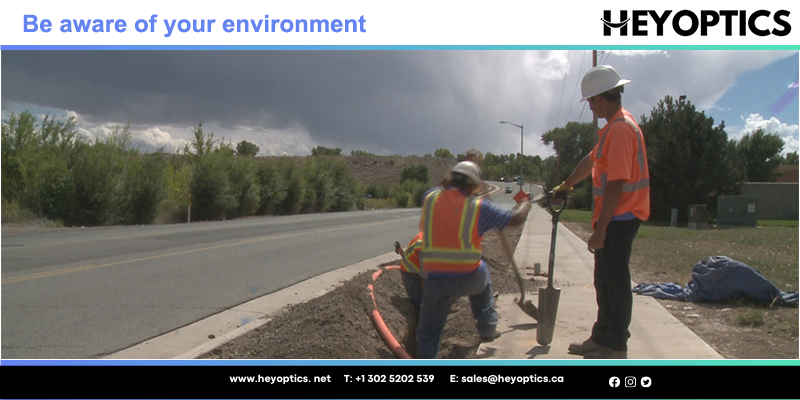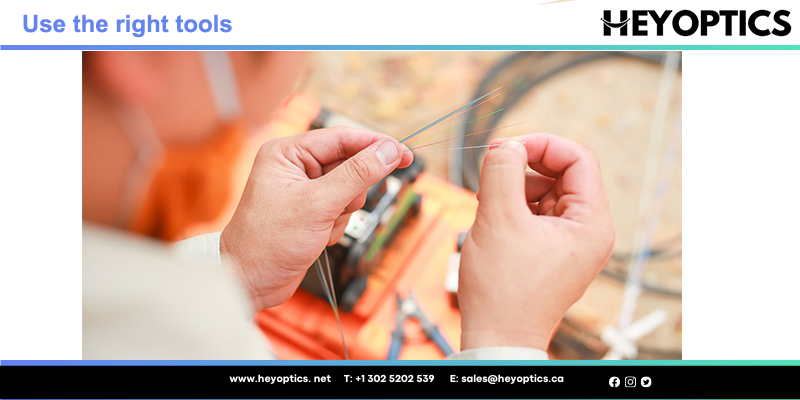Important Safety Rules for Using Fiber Optic Cables
Fiber optic cables were designed to enhance voice and data communication in many different applications. The flexibility of the technology is extraordinary, and advances in methods of communication have revealed even more uses for fiber optics. There are plenty of hazards to watch for when working on commercial and industrial networks. Fiber optic cable can seem safe; it doesn’t carry an electrical charge, and it’s not a heat source. More often it’s a lack of understanding of the real hazards of fiber optic cable that can be the most dangerous safety hazard of all.
Important Safety Rules for Using Fiber Optic Cables
The following are important rules for staying safe when working with fiber optic cables.
Know the standards that apply to your work
Whether you’re installing new fiber optic cables or troubleshooting and repairing an existing fiber network, a working knowledge of the regulations that apply to your project can help you (and your team) stay safe and keep your project on track. The standards that govern work on fiber optic cables include:
Know the installation and maintenance of fiber optic conductors, and the minimum performance standards required to do the job.
The National Electrical Safety Code (NESC), published by the Institute of Electrical and Electronics Engineers (IEEE), specifies safe practices for the installation, operation, and maintenance of power and communication lines and equipment.
Finally, you should follow your company’s safety practices on any job.
Keep it clean
The fiber at the center of a fiber optic cable is glass — powerful yet delicate, and capable of inflicting great injury when damaged or broken. Control hazardous glass fragments from a job by keeping yourself, and your work area, very clean.
- Wear safety glasses with side shields (over your eyeglasses, if you wear them) to help keep fiber shards from reaching your eyes. Keep your hands away from your face while you’re working, and always wash your hands thoroughly before touching your face or contact lenses.
- Wear a disposable lab apron to reduce the chances of fiber splinters collecting on your clothing and transferring to other surfaces (or taking a ride home with you).
- Don’t allow food or beverages in the work area (don’t smoke there, either). Not only can particles from your lunch break contaminate your work, fragments of fiber are impossible to see but easy to ingest if they fall into your food — which could lead to internal hemorrhage and even death.
- Make sure your work area is well ventilated to help prevent tiny glass particles from disturbed fiber cable from becoming airborne and being inhaled.
- Dispose of all fiber cable scraps properly in a labeled container with a secure lid.
- Make sure there’s adequate clearance around any spark hazards or heat sources, such as fusion splicers and curing ovens, to reduce the chance of fire.
- Clean up at the end of the day to control fiber fragments and keep everyone on the job safe.
Understand the chemicals you’re handling
Fiber optic splicing and termination processes incorporate various chemicals, cleaners, and adhesives. Familiarize yourself with the Material Safety Data Sheet (MSDS) for the chemicals you’re using, and always follow safe handling procedures.
Be aware of your environment
Runs of fiber cable often share space with other types of cabling, including power conductors. They can be in confined spaces, atop poles, or near power lines or energized equipment. Hazards can range from dropping a tool on your foot or picking up a glass splinter to induced voltages, explosive gases, and charged wires.
Stay aware of your surroundings and any hazards, whether on your work site or with the specific task at hand. Always observe NFPA Minimum Approach Distance rules when working near power lines and power sources.

Use the right tools
Never look directly into the end of a fiber optic cable. You won’t see anything, even if the cable is live — but the invisible infrared light could still do damage to your eyes. Not only can the right tool help you get the job done better and faster, but it can also help you avoid possible injury. Fluke Networks has the tools you need.
The Fiber Detector is the easiest way to detect invisible fiber optic light for checking fiber activity, polarity, and connectivity — no setup or interpretation is needed.
Visual fault detectors, like the Visual Fault Locator, inject visible light into a fiber that can be detected at the end face or severe bends, breaks, or poor connections.
Power meters measure insertion loss and power levels at the end of a fiber. Tools like the Optical Power Meters can help you determine whether the fiber can support a given application.

Finally
A systematic cleaning effort for the entire work area will ensure the safety of everyone involved.
As new technicians enter the workforce, the importance of safety protocols cannot be overemphasized. Each person must adopt the best practices for the safe handling of all fiber optic components to preserve a healthy and safe environment for everyone on the team.



